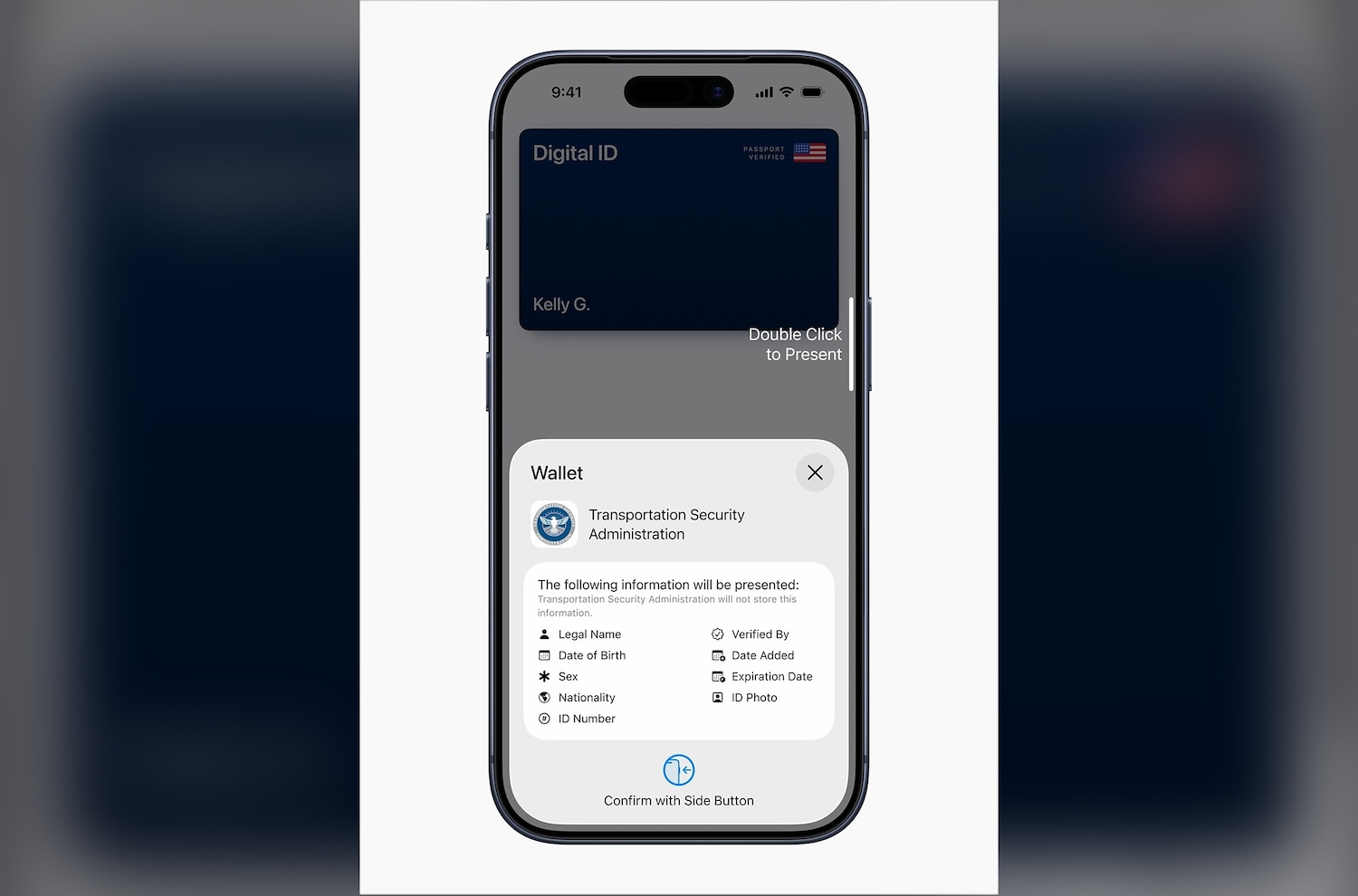Apple has officially launched its long-anticipated Digital ID, a new feature allowing U.S. passport holders to store and present a secure, digital version of their passport directly from the Apple Wallet app. The rollout marks a major milestone in Apple’s push toward making the iPhone—and increasingly, the Apple Watch—a complete replacement for the traditional wallet. With the Transportation Security Administration (TSA) confirming that the Digital ID will be accepted at over 250 domestic airport checkpoints, the announcement signals a significant shift in how Americans may navigate air travel in the coming years.
The Digital ID allows users to scan the details of their physical passport, verify the information using biometric authentication, and store an encrypted version of their passport securely on their device. Setting it up involves scanning the photo page of the passport, reading its embedded security chip via NFC, and capturing a live selfie that uses facial-movement prompts to confirm identity. Once verified, the digital passport is added to Wallet, similar to how payment cards or boarding passes are stored.
Apple emphasizes that privacy and security were central to the feature’s design. The Digital ID is stored locally on the device using hardware-level encryption, meaning neither Apple nor outside parties can access the stored passport data. When presenting the ID at a TSA checkpoint, the user must authenticate with Face ID or Touch ID before sharing only the necessary identity fields requested by TSA systems. Apple also notes that it cannot see when, where, or how often the Digital ID is used, reinforcing its position that the feature is meant to give users more control over their personal data.

At participating TSA checkpoints, travelers will simply double-press the side button on their iPhone or Apple Watch, select their Digital ID in Wallet, and hold their device near an identity reader. The system then verifies the encrypted credentials and confirms the user’s identity without requiring them to hand over their device—something Apple says reduces physical interaction while speeding up the screening process.
Although Apple’s Digital ID represents a major step toward digital identity adoption, Apple and the TSA stress that the feature is still in a beta rollout. This means that while hundreds of airports nationwide are participating, support may vary checkpoint-by-checkpoint, and some infrastructure updates are still ongoing. As a result, travelers are advised to continue carrying their physical passports, especially because the Digital ID is currently valid only for domestic air travel. It cannot yet be used for international flights, border crossings, or situations where a physical passport is legally required.
The launch is limited to U.S. passport holders, with no timeline announced for expansion to other forms of government ID or passports issued by other countries. Still, the move aligns with earlier digital ID initiatives, such as the addition of state driver’s licenses and IDs in select states. Apple says the Digital ID is part of a larger mission to support official credentials in Wallet while keeping them private, secure, and easy to use.
To use Digital ID, users must have an iPhone 11 or later running the latest version of iOS, or an Apple Watch Series 6 or later. This ensures the device has the necessary secure hardware modules and biometric capabilities. Apple has not indicated whether the feature will later become available on older devices, but the current requirements suggest the company sees robust on-device security as essential.
Security experts view Apple’s Digital ID as a promising advancement, though some caution that widespread adoption will take time. While the convenience is undeniable—especially for frequent travelers—government agencies, private businesses, and international authorities will need to coordinate standards before digital identification can replace physical documents entirely. For now, observers see Digital ID as a complementary tool rather than a wholesale replacement.

Still, the impact on travel may be significant. TSA has signaled strong interest in expanding the use of digital credentials to streamline airport screening. The agency has already deployed identity readers capable of interacting with mobile IDs, and early testing suggests that the technology can reduce wait times and cut down on lost or damaged IDs. If the Digital ID proves reliable during this beta phase, more checkpoints are expected to enable support, and additional features could follow.
Beyond air travel, Apple envisions broader uses for digital identity. In the future, Digital ID could assist with age verification at retail locations, online identity confirmation for services requiring government ID, or digital document checks at hotels. None of these applications are available at launch, but the infrastructure Apple has built hints at the potential for expansion. Whether such uses take root will depend on cooperation between Apple, government agencies, and private-sector partners.
For now, Apple’s Digital ID marks a meaningful step forward. It offers a secure, private, and convenient way for travelers to verify their identity and reduces the friction of managing physical documents. The feature also signals Apple’s commitment to its broader vision of the Wallet app as a central hub for life’s essential credentials. Though limited today, the Digital ID could pave the way for a future in which physical passports and IDs play a much smaller role.
As with many new technologies, adoption will be gradual. But for millions of iPhone users, especially those who travel often, Apple’s Digital ID represents a glimpse of a more streamlined, more digital future—one where the most important parts of your wallet live on your device, protected, encrypted, and always within reach.











